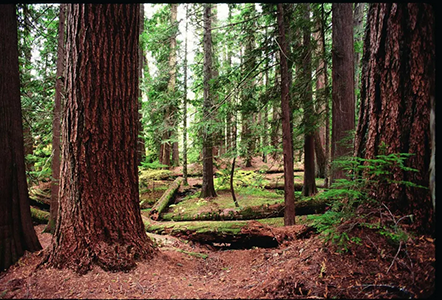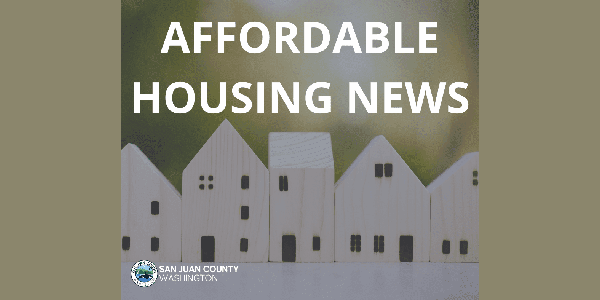||| FROM THE WILDLIFE NEWS |||
When is the Northwest Forest Plan no longer the Northwest Forest Plan (NWFP)? After the Forest Service has removed the skeleton, meat, and blood, leaving only the dermis. Any resemblance the proposed NWFP bears to the original NWFP is only skin deep.
The Northwest Forest Plan is likely a dead plan walking. The Forest Service began its long campaign to emasculate the NWFP as soon as President Clinton left office. The unraveling began during and was aided by the presidency of George W. Bush. The campaign continued unabated under and was abetted by the presidencies of Barack Obama, Donald Trump, and Joe Biden.
While the conservation community should resist the demise of the NWFP, we must and can pivot to something better (more on that later).

Map 1. The national forests within the Northwest Forest Plan. Source: Forest Service.
Some Background on the NWFP
Any bureaucracy loathes having its discretion limited. Since the end of World War II, the Forest Service—along with the Bureau of Land Management (BLM)—had been abusing the discretion granted to it by Congress in managing federal forestlands. At peak carnage in 1989, the Forest Service and the BLM were clear-cutting three square miles of old-growth forest on federal public lands in Oregon each week (see Chart 1). In 1994, President Clinton directed these agencies to adopt a conservation strategy, the Northwest Forest Plan. As a bureaucracy, the Forest Service has hated the NWFP ever since it was imposed upon it. So did the BLM (the agency abandoned the NWFP in 2016).

Chart 1. Federal logging levels by state on national forests in the NWFP area, 1985–2022. This graph doesn’t include the ~1,000 MMBF (aka billion board feet) peak of logging of BLM forestlands annually in Oregon ca. 1989. Source: Forest Service.
The NWFP allocated the 24 million acres of primarily Forest Service and BLM forested holdings in the Northwest to late-successional reserves (LSRs, 6.5 million acres), “managed” LSRs (0.1 million acres), “matrix” or free-fire logging areas (3.28 million acres), riparian reserves (RRs), stream buffers within “matrix” areas (2.1 million acres), and adaptive management areas (AMAs, 1.5 million acres).

Figure 2. This Douglas-fir is perhaps a thousand years old. The only way to know for sure is to cut it down and count the rings. Counts on nearby stumps showed more than six hundred rings on trees that were three feet in diameter at their base. Source: Umpqua Watersheds (first appeared in Oregon Wild: Endangered Forest Wilderness).
Oregon Wild, Bird Alliance of Oregon, Cascadia Wildlands, and WildEarth Guardians summarized the NWFP and its effects as follows in their initial analysis of the Forest Service’s draft environmental impact statement (DEIS) for the Northwest Forest Plan amendment:
The NWFP required agencies to shift their focus from logging the last remaining stands of mature and old-growth (80+ year old) forests to seeking to recover more older forest habitat. This first-of-its-kind ecosystem recovery plan became a world-wide model for habitat and wildlife protection, and it has succeeded in reversing the decline of mature and old-growth forests in the Pacific Northwest. These recovering forests have been a lifeline for imperiled fish and wildlife, safeguarded clean water, and provided an enormous unforeseen benefit for the climate by pulling vast amounts of carbon dioxide from the atmosphere and safely storing it in their trunks, roots, and forest soils.
These four organizations (hereafter “the generally good guys”)—along with Earthjustice—are the most likely to sue the Forest Service for gutting the Northwest Forest Plan. Unfortunately, some other “conservation” organizations have taken a more favorable posture on the proposed amendment to the NWFP (think Stockholm syndrome).

Figure 3. Old-growth Port Orford cedar. Source: Steve Miller (first appeared in Oregon Wild: Endangered Forest Wilderness)
What Is Being Proposed in the NWFP Amendment DEIS?
In their analysis, the generally good guys characterize as follows the four alternatives proposed in the Forest Service’s DEIS for the Northwest Forest Plan amendment (emphases in original):
- Alternative A: No Action—retains current Northwest Forest Plan protections
- Alternative B: Proposed Action—redefines “mature” and “old-growth,” eliminates protections for unlogged mature forests in LSRs, increases clearcutting of mature and old-growth forests in Matrix lands, and increases logging in dry forests that will degrade habitat, emit greenhouse gases, and potentially increase fire hazard
- Alternative C: More emphasis on natural processes, including wildland fire, while still increasing logging through loosened protections in LSRs and new definitions for mature and old growth
- Alternative D: Even greater flexibility and “predictability of timber outputs” than Alternative B, and would eliminate rare species survey requirements before logging in certain areas
The generally good guys conclude that Alternatives B, C, and D “would weaken existing protections and increase logging on our national forests to varying degrees.”
**If you are reading theOrcasonian for free, thank your fellow islanders. If you would like to support theOrcasonian CLICK HERE to set your modestly-priced, voluntary subscription. Otherwise, no worries; we’re happy to share with you.**








